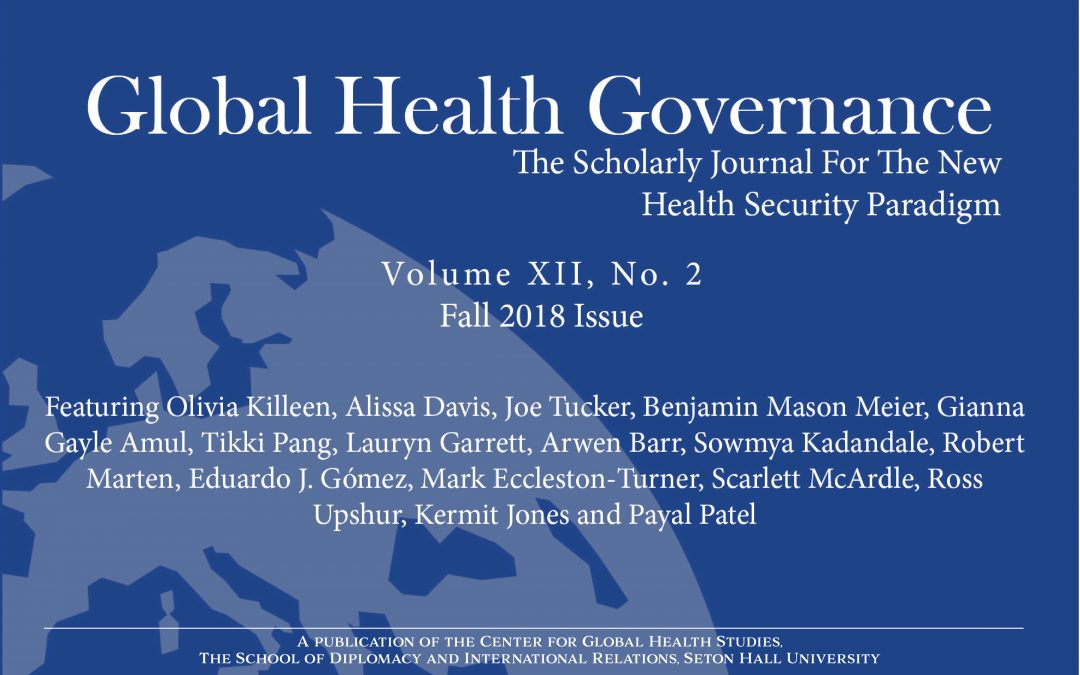by Mark Eccleston-Turner, Scarlett McArdle and Ross Upshur
The global health landscape is characterized by a multitude of actors, including nation states, international organizations and non-governmental organizations, all of which play substantial roles in addressing global health issues. The range of organizations involved means a substantial heterogeneity with respect to their structure, mandate, legal standing, and obligations. As well as this diversity, they are substantially differentiated with respect to the power, influence, and the financial resources they are able to mobilize in order to advance their organizational mission. This variety also continues further through to the ability to determine accountability, with each organization differing in the stakeholders to whom it is accountable; some may be accountable to shareholders or a Board of Directors, while others will be accountable to governing bodies, national parliaments, or to the member states which comprise the organization. As such, concepts of accountability are often limited to ensuring accountability for the success of the organizational leadership in achieving the goals related to the mission of the organization1. Thus, the fundamental motivations of organizations are broadly “self-regarding” in nature. This issue, and how this range of actors may be governed in a truly global constitutional system has been considered by a number of scholarly perspectives, resulting in robust, academic discussions on what the global constitutionalized system in global health ought to look like.2 However, one thing which has not yet been addressed fully in the literature, and which adds a distinct layer of complexity in current practice, without this fully formed constitutionalized system, is the fact that, when considering the relationships that organizations have with other relevant actors in the area; the extent to which enforceable obligations are owed between actors is unclear, and it is this which we focused on in the present paper. In this case we are not so much interested in beneficiaries of services provided by organizations, or services which have been formally contracted for between organizations, but rather, what sorts of obligations organizations have towards each other, beyond any contracted services.
This question is becoming increasingly important because, whilst such organizations typically work only within their pre-defined mandate, on some occasions, typically during an emergency event, a multitude of actors come together to work towards a common goal. A good example of how this can play out was evidenced in the Ebola outbreak of 2014-2016. The outbreak had all the chaotic features of a global health emergency, and brought a wide variety of actors to respond to the crisis, including: local civilian healthcare workers; voluntary foreign healthcare workers; domestic military forces; foreign military forces; private philanthropic organizations; international organizations; non-governmental organizations; universities; and foreign government departments. Fragmentation and poor co-ordination was characteristic of the early response, as were allegations of ineptitude, foot-dragging, and politically motivated decision making.3 Even with an attempt by the World Health Organization (WHO) to develop some sort of coordination of action, this was still unsuccessful and lacking. Without an overarching understanding of the coordination of relationships, even attempts at ad hoc cooperation remain stunted.
In this paper we will explore issues related to the governance of inter-organizational relationships – taking the multi-layered response to the 2014 West African Ebola Outbreak as our point of departure. We note that, ideally organizations engaged in global health activity would have a clear set of governance rules that would guide their behaviors, and set expectations for collaborating with other organizations, though this is rarely the case. More broadly, we highlight that there is no overarching set of principles that would cover all the possible ways in which collaborations can take place. We conclude by suggesting some principles to guide collaboration between organizations engaged in global health in the future …

